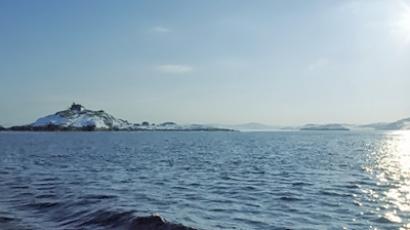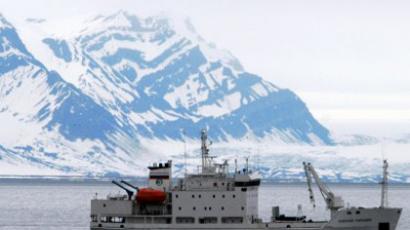Communist paradise lost: showcase turned ghost town
Imagine a community where you want for nothing, where work is plentiful and life is easy. Today, a Utopia that once existed in a remote Russian outpost is a fading memory.
The lost paradise did not lie in the embrace of Russia’s national borders, but sat in splendid isolation on the Norwegian archipelago of Spitsbergen. The town of Pyramid once embodied a Soviet dream – a system without money, but where everyone’s needs were provided for. The town is gone, and in its place is one of the busiest sea gull colonies in the Arctic. Restless as the northern sun, the birds scout the island in search of food for their young. Noisy and disorderly like all big clans, the gulls are the last reminder of the warm family atmosphere that once permeated this Arctic island.Back in the 80s, it was the shrieks and laughter of children that split the air around an apartment block specially built to house young families. While the adults were out working, the kids were left to their own devices, running down hallways and banging doors. Local residents usually referred to this building as “the crazy house.”Across the street was a female dormitory nicknamed Paris in a reference to Russian women’s undying love of all things French. A bit further away was a male dormitory known as London after the supposedly gentlemanly ways of its residents. In its heyday, the settlement was home to more than 1,000 people. Today, it is a ghost town where the spirit of communism still lurks in the abandoned buildings. The name Pyramid was chosen because of the cube-like mountains surrounding the town. Thirty years ago, this place had the highest living standards in the Soviet Union. Salaries two to three times higher than on the mainland, free rent, free food, and a vibrant social life. In a way, it was a test model for the brighter future the Soviet people were trying to build.The world’s most northerly statue of Lenin still peers into the nearby glacier. Most of Pyramid’s residents worked at a coal mine that was never very profitable, yet maintained for the sake of keeping a Soviet presence on this strategic archipelago. Not merely an outpost, this westernmost Soviet settlement was also an ideological shop window for capitalist rivals. And no expense was spared to cut a dash.A concert hall, a library, a rock band and even a half-size Olympic pool – Pyramid residents were truly living the Soviet dream. Yet their best hopes tanked almost overnight when the Soviet Union fell apart. All of a sudden, the people realized that their little piece of heaven was no more than a geopolitical pyramid based on a faulty economy and shaky ideology.In a few years, the former Arctic paradise turned into a desperate hole. People who were used to eating caviar for breakfast were forced to turn to hunting to put food on the table. One after another, the families packed up and left, abandoning Pyramid in all its grandstanding glory. A pillar was erected there, with much pomp, on the settlement’s anniversary, only to become its gravestone decades later. When the last batch of coal was extracted from the local mine in the 1990s, workers just left it here. It was their way of raking over the coals of a life that always seemed a bit too good to be true.














